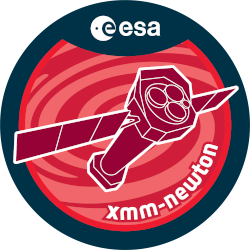

| Proposal ID | 074196 |
| Title | Understanding accretion beyond the Eddington limit: NGC 5204 X-1 |
| Download Data Associated to the proposal | https://nxsa.esac.esa.int/nxsa-sl/servlet/data-action-aio?obsno=0741960101 |
| DOI | https://doi.org/10.5270/esa-0jroo5w |
| Principal Investigator, PI | Dr Andrew Sutton |
| Abstract | It has been suggested that ULXs are in a new super-Eddington ultraluminousaccretion state, and that they progress through a sequence of three spectralregimes with increasing accretion rate. However, our recent results (Sutton etal. 2013) indicate that inclination is also critical in determining the observedX-ray properties. These properties can broadly be explained by a massiveradiatively-driven wind that emerges as the Eddington limit is exceeded, andforms a funnel around the black hole axis. Previous observations show NGC 5204X-1 straddling the boundary between two ultraluminous regimes, marking it as acritical source in testing this scenario. Here we propose to obtain a furtherfour 20 ks XMM-Newton EPIC observations, which will allow us to probe the validity of the proposed model. |
| Publications |
|
| Instrument | EMOS1, EMOS2, EPN, OM, RGS1, RGS2 |
| Temporal Coverage | 2014-06-27T22:50:50Z/2014-06-28T05:35:50Z |
| Version | 17.56_20190403_1200 |
| Mission Description | The European Space Agencys (ESA) X-ray Multi-Mirror Mission (XMM-Newton) was launched by an Ariane 504 on December 10th 1999. XMM-Newton is ESAs second cornerstone of the Horizon 2000 Science Programme. It carries 3 high throughput X-ray telescopes with an unprecedented effective area, and an optical monitor, the first flown on a X-ray observatory. The large collecting area and ability to make long uninterrupted exposures provide highly sensitive observations. Since Earths atmosphere blocks out all X-rays, only a telescope in space can detect and study celestial X-ray sources. The XMM-Newton mission is helping scientists to solve a number of cosmic mysteries, ranging from the enigmatic black holes to the origins of the Universe itself. Observing time on XMM-Newton is being made available to the scientific community, applying for observational periods on a competitive basis. |
| Creator Contact | https://www.cosmos.esa.int/web/xmm-newton/xmm-newton-helpdesk |
| Date Published | 2015-07-17T22:00:00Z |
| Last Update | 2025-08-04 |
| Keywords | "XMM", "xmm newton epic", "ultraluminous regimes", "XMM-Newton", "blackhole axis", "accretion rate", "spectral regimes", "ngc 5204 x", "eddington limit", "super eddington", "EPIC", "xray properties", "NGC 5204" |
| Publisher And Registrant | European Space Agency |
| Credit Guidelines | European Space Agency, Dr Andrew Sutton, 2015, 'Understanding accretion beyond the Eddington limit: NGC 5204 X-1', 17.56_20190403_1200, European Space Agency, https://doi.org/10.5270/esa-0jroo5w |